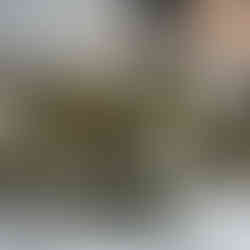I've always wanted to make a dinner set. Not a partial one, not one made up of seconds like the set I have in my home, but a proper, full, intentional dinner set. Problem is, making upwards of 60 pieces isn't only at least 6 weeks work from start to end, but making the pieces fit the client's home - fit their interiors, fit their lifestyle, fit the way they eat, entertain and move through their kitchen - takes a bit of planning. As well as a bit of a budget.
So lo and behold when Jane reached out to me, asking if it was something I would consider making, I was chuffed. Not only did the commission give me the chance to figure out the perfect dimensions between the pots (the relationship between a dinner plate, a side plate, three shapes of bowl, small cups and handled mugs can take a while to test, especially if they're to look like a cohesive set) but Jane also leapt at the chance to choose some glaze finishes that would compliment her interiors. These colours I then developed over a series of weeks of glaze testing, altering transparency and opacity, tone and texture. Handmade dinner sets and one-off ceramics can be ultimately customisable, which I suppose is a great thing if you're looking for something bespoke.
When I was making the set for Jane, functionality was at the forefront of my mind. Not only did Jane want to use these pieces every day, they were also going to go through the dishwasher, and used frequently for entertaining. I made the pieces as durable as I could (good base compression, slow bisque, durable clay) whilst maintaining their lightness (nothing worse than a really heavy handmade plate) and I'm happy to report that so far - three months and counting since I delivered them - we have had no breakages, chips or glaze flaws. Not that I'd expect any, but I'm happy the pots are out there doing me proud.
I made the set roughly in three batches: throw-turn-fire-glaze-fire, throw-turn-fire-glaze-fire, throw-turn-fire-glaze-fire, so after each pause in making, when I'd unload the new additions from the kiln, the pots would collect on my lowest shelf. Soon enough I had become quite used to seeing them there, when I was throwing for a different project or researching a new glaze recipe. It was quite nice when I was teaching, too, to have them on the shelf - my 12 week beginners class saw the entire set emerge from mud to thrown pots to turned pots to bisque to glazed bisque to fired ceramic which was a surprisingly lovely teaching aid and conversation topic. So when I went to see the set installed in Jane's home the other week - she kindly let me come and document the set for this blog - I felt a strange surreality surrounding them. Here they were, not covered in dust and looking rather dull on the bottom shelf - but singing, almost glowing from being given their new lease of life. Weird one isn't it - how environment can so affect the way you see even your own work, that you'd become so familiar with. I'd be tempted to call it 'transformative' but really it's just a different way of seeing the same thing.
Making pottery by hand is a true labour of love: something that takes time, patience and - I always think - a bit of bravery. Even if you follow all the rules, the chances are that at least one of the pieces isn't going to make it through the firing, so making in anticipation of accidents isn't a bad idea at all. During the making of this set, I was clearly somehow blessed by the kiln gods, which means that all the extra pots I made have come home with me: token reminders of the making of the first set, and nice emblems of work that felt satisfying to make, and is hopefully a joy to use.
I'll put some pictures below so that you can see the kind of pots I made for Jane. If you're interested in commissioning a dinner set (upwards of 18 pieces will qualify for special prices), please email me at studioflorenceceramics@gmail.com and I can send you my dinner set price list.





































Comments